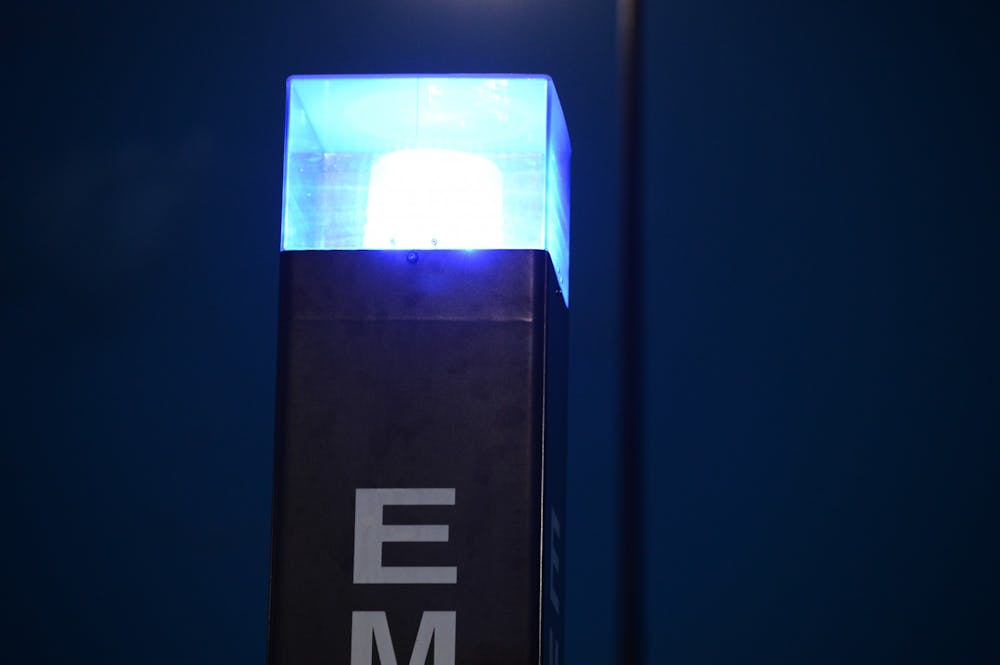As previously noted by others, there seemed to be a higher frequency of alerts regarding instances of sexual violence this semester on Auburn's campus or in the community.
Some say students should have unrestricted access to arm themselves with non-lethal self-defense tools in campus facilities to protect themselves from sexual violence. These individuals don't seem to be directing their focus toward informed ways of mediating sexual violence.
I will not use this time to debate whether students should have the freedom to hold weapons. What matters is that this solution will not actually stop sexual violence.
The reality of sexual interpersonal violence tells us this is an ineffective solution that would obscure the issue at hand.
This "solution" provides a false sense of security and builds upon widely-held false narratives about sexual interpersonal violence.
Yet again, we obscure what is actually happening and make it more difficult to develop effective prevention efforts as a consequence of continually facilitating mythical depictions of sexual violence.
The argument for self-defense tools as a "solution" to sexual violence assumes survivors are victimized by strangers in unsafe places — this is largely untrue. Most individuals are assaulted or harassed by someone they thought of as safe, usually someone they know. Moreover, people are violated in places they thought were safe, in scenarios they thought to be safe.
Though "stranger danger" may occur, similar to almost every other crime — it is not the most common perpetrator identity.
Additionally, this solution doesn't account for the obvious legal implications. The odds of “winning” a case of sexual interpersonal violence in court is difficult for the victim, for a variety of reasons. Imagine how it would look if an individual alleging sexual violence with minimal evidence stands in court and defended pulling a weapon on their partner.
Besides, if sexual violence occurs in scenarios believed to be safe, why would someone be likely to have a weapon on hand?
In addition, this solution victim blames: What if someone doesn't use a weapon but has one? Were they responsible for stopping the act? Should they now feel guilty that they didn't do "enough"?
Yet again, we make it the victim's responsibility to end violence.
Violence is unilateral: It's the perpetrator's responsibility to not be a perpetrator.
In addition, the capability of protection is not quantifiable given the biological response in face of trauma (i.e., most people freeze when sexual violated by someone that is not a stranger.)
If the realities of rape and assault are not clearly portrayed, or are falsely displayed such as in solutions as this, how are victims to be believed? To identify that they themselves were violated?
Sexual violence is “hidden in plain sight” because we dismiss individual accounts instead of listening to them. We dismiss accounts in which victims know the individual that perpetrated them. We tell people what victimization is rather than listen to their lived experiences that say the contrary.
We develop "solutions" such as this that further rape myths.
This solution says that if people have weapons, somehow the sexism, lack of knowledge regarding consent and boundaries, blatant disregard for autonomy, the hyper-sexualization of college-aged youth, cycles of abuse, narratives of purity culture and the hyper control of sexual intimacy of others will suddenly vanish.
If we are to truly develop an effective solution, we must actually listen to victims.
Numerous qualified entities have used the real lived experiences of victims/survivors to develop informed solutions.
I argue that the University is held responsible for developing and implementing protective measures. There are several actions proven to be effective at reducing rates of sexual violence on campuses.
Sex education delivered in presentations and disseminated in flyers is proven to help mediate sexual violence. It is shown to be effective when including information such as contraceptive usage, healthy sexual actions, red flags for unhealthy relationships and a variety of other topics relating — thought not exclusive to — sexual and relational well-being.
Flyers and presentations also allow the opportunity to provide resources like therapy, STD testing, Title IX supports and other community and University-specific policies and practices.
As the Center for Disease Control notes, there are many ways to help mediate sexual violence. Just to name a few, bystander approaches, teaching health's safe dating and intimate relationship skills to adolescents and promoting healthy sexuality.
Ultimately, as with every sociopolitical issue, until we acknowledge each other's humanity we will not find a solution. Until we recognize the power and due right of victims to express their own experiences, we pride our own beliefs over reality and the subsequent actions exacerbate the issue for ourselves and our peers.
Do you like this story? The Plainsman doesn't accept money from tuition or student fees, and we don't charge a subscription fee. But you can donate to support The Plainsman.

Regan Moss, senior pursuing concurrent degrees in microbiology and neuroscience, is a columnist for The Plainsman.





